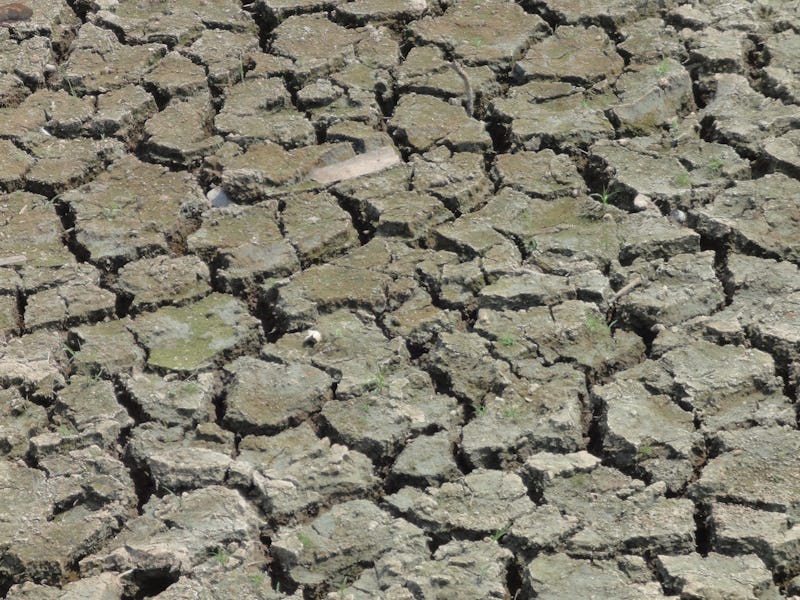5 Facts Prove the P-T Boundary Was the Best Mass Extinction
In the contest of who's the worst, this moment of planetary destruction wins handily.

With life must come death; with evolution must come extinction. You’ve certainly heard of the asteroid that nearly wiped out the dinosaurs 65 million years ago, but the most outstanding destructive event in the planet’s history was nearly four times as long ago, and it nearly cleared life clean off the Earth. At the boundary between the Permian and Triassic periods, 90 percent of marine species and two-thirds of those on land perished, never to be seen again.
The causes of the event, which went down about 252 million years ago, are still a matter of scientific inquiry, although new research suggests that it was probably a combination of factors, leading to at least two distinct waves of extinction that compounded each other in their effects. Carbon emissions from volcanic activity almost certainly was the death knell, leading to runaway global warming and ocean acidification, not unlike what the planet is experiencing today.
Supercontinent Pangea ruled Earth 250 million years ago.
Times of mass extinction aren’t great for the creatures living through them, but from a wider evolutionary perspective, they are extraordinary, almost hopeful times that carry with them a promise of regeneration and new life. With every great extinction the planet has seen, new and incredible species have crawled out and found ways to adapt to the new normal. Given that humans will go down in history as the first species to single-handedly cause mass extermination of our fellow planet-mates, it’s comforting to know that even if we do ourselves in, life on Earth will probably recover in the long run. Here are five reasons the Permian-Triassic boundary was the best extinction, even though it was also the worst.
It ended the reign of giant insects
Maybe worse than cockroaches everywhere, the late Permian skies were ruled by giant flying insects, including one that looked like a dragonfly and had wingspans up to 28 inches across. There’s good evidence that the maximum size of flying bugs is limited by oxygen concentrations in the atmosphere, since their bodies need to suck lots of the stuff through tiny tubes in order to stay afloat. At least, that was the case until birds took to the skies about 150 million years ago, after which insect size was limited by their ability to stay out the beaks of ferocious carnivorous flying dinosaurs.
It killed off most of the cockroaches
The P-T boundary is the only known mass extinction of insects, and most of the insects at the time were distant cousins of cockroaches that looked pretty much the same. Today, the cockroach is a symbol of indestructibility, which gives you a bit of an idea as to how bad things got on the planet at that time.
'Lystrosaurus georgi,' a proto-mammal and survivor of the Permian-Triassic extinction.
It had the weirdest looking animals
At the end of the Permian period, all of the world’s continents were pushed together into a supercontinent called Pangea. It was a huge time of environmental change on the planet, when the first conifer forests began to sprout, and the first large animals evolved on land. Because all of the land vertebrates were a lot more closely related to each other than they are today, they tend to look like silly chimeras that blend features of animals we are more familiar with. Take Lystrosaurus for example: it’s a genus of proto-mammals including animals that might otherwise have been called the rat-lizards or the turtle-dogs.
'Lystrosaurus murrayi, 'a dicynodont from the Early Triassic of South Africa, India and Antarctica.
It made room for dinosaurs and mammals
In a very literal way, you have the Permian-Triassic extinction (and all other catastrophic moments of the planet’s history) to thank for your very existence. In the wake of disaster, the survivors inherit the Earth. In this case, two major groups of terrestrial vertebrates emerged from the ashes: the sauropsids, or “lizard faces,” which would evolve into reptiles, dinosaurs, and birds; and the synapsids, which would eventually beget the mammals. All of the weird and amazing creatures on this planet, humans included, descended from animals that got through the tough times and went on to live another day, and breed another generation.
It proved that life will go on
Whatever combination of factors contributed to the mass extinction, it’s clear that things got really bad before they got better. It was millions of years before the planet saw a recovery to previous levels of biological diversity. Recent research suggests that the ultimate killer of much of the marine life was carbon pumped into the atmosphere by volcanic activity, which caused both global warming and ocean acidification. Interestingly, the rate of carbon emissions at the time was similar to the rate today — the difference is that the volcanic activity lasted many thousands of years, whereas human fossil fuel burning has been ramping up for only a couple centuries. This suggests that there’s probably still time for humans to save ourselves, and even if we don’t, life will almost certainly go on. No one knows what fantastic beasts will rise up in the wake of the planet’s sixth great extinction, but they’ll certainly be extraordinary.